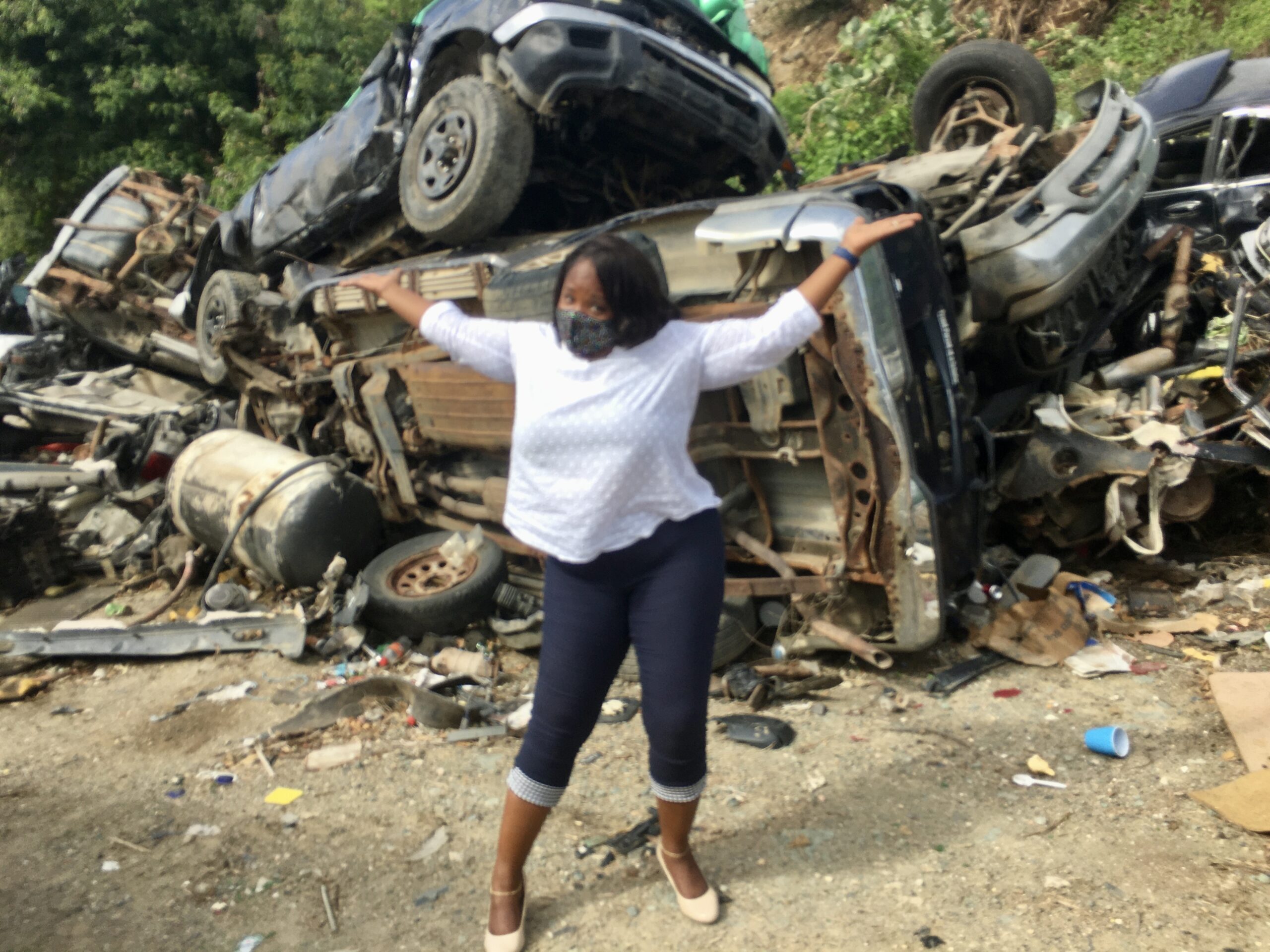
Although it hasn’t attracted much public attention, the Virgin Islands government appears to be moving forward with a private company’s proposal to build a waste-to-energy plant on St. John.
AST-Clean Tech has been working with the Virgin Islands Waste Management Authority (VIWMA) on agreements to lease land and supply waste that will then be burned to generate electricity, according to Dan Levin, CEO of AST Group.
AST (Advanced Sustainable Technology) uses a process called plasma gasification, which “differs from traditional incineration by breaking down waste at a molecular level using extremely high temperatures,” said Levin. “This creates a cleaner, more efficient process with fewer emissions and a wider range of waste materials that can be processed.”
The plan calls for the construction of a single-story structure with a footprint of 12,000 square feet in Estate Susannaberg, a largely residential area. The plant would be built on the site of the Susannaberg Transfer Station, where St. John’s solid waste is stored until it is sent to the Bovoni Landfill on St. Thomas.

Levin said in September that AST is working with several private investors to raise the $15 million to construct the plant and is applying for permits with the V.I. Department of Planning and Natural Resources, the U.S. Environmental Protection Agency, and VIWMA.
The plan requires finalizing agreements with the Virgin Islands Water and Power Authority to purchase the electricity generated by the plant. “The plant is expected to generate close to one megawatt of electricity, which would cover approximately five to 15 percent of St. John’s total energy needs,” Levin said.
The concept for the plant was initially made by AST in May 2023 in response to the Public Services Commission’s request for certification as a Qualified [energy-producing] Facility.
According to the PSC’s report of the meeting, “It is a small plant, anticipated to produce only 750 kW, but sufficiently large to address most of St. John’s waste disposal. AST has similar plants operating in Europe …. AST has indicated an interest in building larger facilities on St. Thomas and St. Croix if this plant is successfully built and operated.”
During the May 2023 PSC meeting, “The Commission granted AST Cleantech QF [qualified] status, [but] cautioned that the plant’s electricity sold would compete with solar and wind for appropriate pricing and that the remaining costs would need to be cost-effective for the Waste Management Authority.”
It’s unclear what progress has been made toward the goal of constructing the plant since Levin met with PSC commissioners in June 2024, when the project was last updated with the PSC.
As of mid-November, no contracts between the VIWMA and AST have been signed, and none are pending, according to Charmin Springer, a communications administrator with Waste Management.
Similarly, “Currently, there is no agreement between WAPA and Advanced Sustainable Technologies (AST),” according to Shanell Petersen, WAPA’s director of communications. “Discussions with AST continue to reach a price point beneficial to our customers, as WAPA remains open to public-private partnerships that support waste-to-energy initiatives and protect natural resources,” she said.
If the funding and permits are acquired this year, construction could begin in early 2025, and the plant could be operational by the start of 2026, Levin told The Source in September.

Levin said that St. John was chosen “to showcase a new model for localized island waste management.” Like all the islands in the territory, St. John has problems managing its solid waste. In the early 1990s, the dump at Susannaberg caught fire and burned on and off for months. After it was permanently extinguished, the Susannaberg site became a solid waste transfer station where all of the island’s solid waste is currently packed and transferred by truck and barge to the Bovoni Landfill on St. Thomas.

Levin said, “St. John produces approximately 8,000 to 9,000 tons of waste annually. Transferring the waste to Bovoni is costly for the government, and the plant will eliminate these costs over time.”

The proposal has attracted the attention of David DiGiacomo, a retired attorney who lives on St. John and has been active in environmental issues. (DiGiacomo was the attorney who provided the notices required by law to compel the federal government and the owners of Caneel Bay Resort to confront the contamination issues on that property.
DiGiacomo has voiced a number of concerns about the proposal for a waste-to-energy plant for St. John. In June, he wrote a letter to Gov. Albert Bryan Jr. outlining his reservations. Among the first, “The fact that this particular proposal for the installation of a trash incinerator was before the PSC without disclosure to our St. John community is disturbing; [it] indicates a lack of transparency and is disrespectful,” he said.
DiGiacomo said he had done some research on the technology and believes “The potential effects of a waste-to-energy incinerator upon the health and welfare of those who call St. John home are significant.”
Levin has said that AST’s system “produces zero harmful emissions due to its closed, vacuum-sealed process. The only byproduct, aside from energy, is an inorganic crystal, which can be safely used as a product for energy storage materials. This byproduct has no hazardous characteristics and is considered safe by all known analysis testing.”
It’s unclear if AST has successfully built any plasma gasification plants or where, in the United States, the technology is being utilized by municipalities. Levin has not responded to requests seeking answers to these questions submitted by email several times in the past two weeks.
Waste-to-energy facilities using other technologies do exist in numerous locations around the world, according to DiGiacomo. “The European Union has adopted comprehensive regulations to ensure that the waste-to-energy facilities do not put the public at risk from harm associated with the release of highly toxic metals and other products resulting from the incineration of trash that contains a wide variety of elements dangerous to the health of humans and animals.”
DiGiacomo believes that laws and regulations should be in place before considering this type of technology. “The territory of the Virgin Islands has not adopted any laws or regulations that I am aware of,” he said.
It’s not the first time a waste-to-energy proposal has been pitched to the V.I. government. In 2012, the V.I. government came close to approving a plan with Alpine Energy to burn waste to generate electricity, but the V.I. Legislature voted it down because of concerns about the quantity and quality of the waste to be burned and potential harmful effects on the environment.
Levin said his company proposed a waste-to-energy facility on St. John to assist in reducing the high cost of transferring waste to St. Thomas. In 2011, the annual cost of transporting solid waste was $1.5 million.
Transferring waste between islands is costly in terms of money, logistics, and the carbon footprint, but it’s unclear whether the nearly 9,000 tons of solid waste produced on St. John is enough to keep the AST plant running for 330 days, as AST has proposed.
“The efficiency of the incinerator and generator are only assured if there is an adequate amount of trash to feed into the system,” DiGiacomo said. “If the trash is not available on St. John, would we then see trash shipped from Bovoni and St. Thomas to meet the need to keep this incinerator in operation 24 hours a day?”

Another consideration is the community’s efforts to implement long-term recycling solutions. Island Green Living Association has launched several successful recycling programs on St. John and is continuing to develop innovative solutions to the island’s solid waste problems. If measures they envision are implemented, the waste stream would be significantly reduced.









